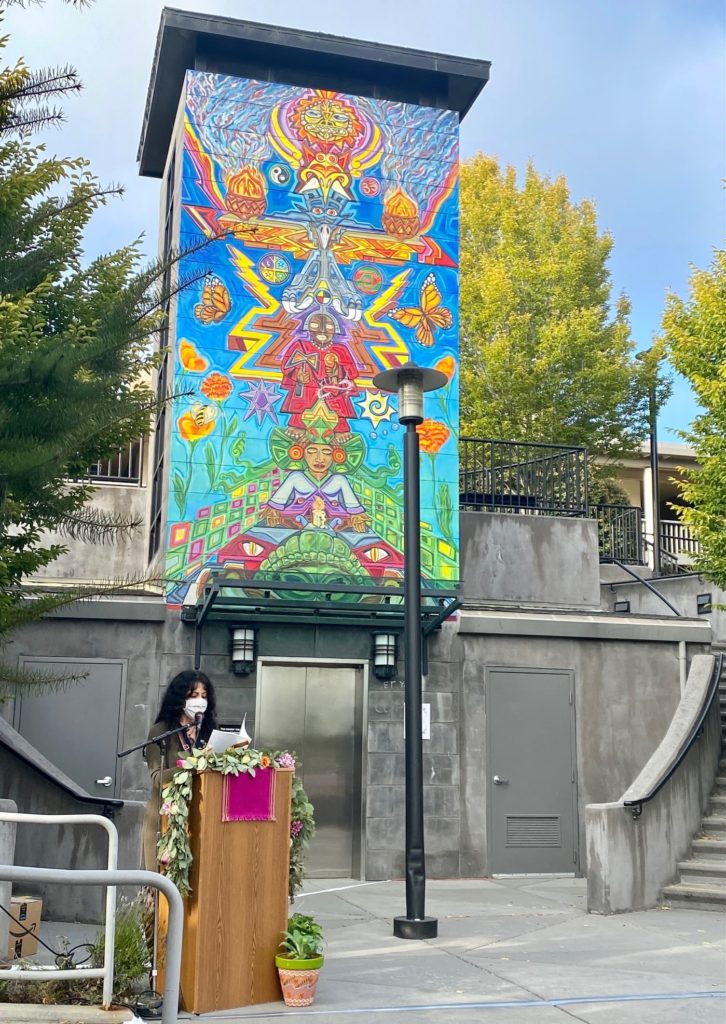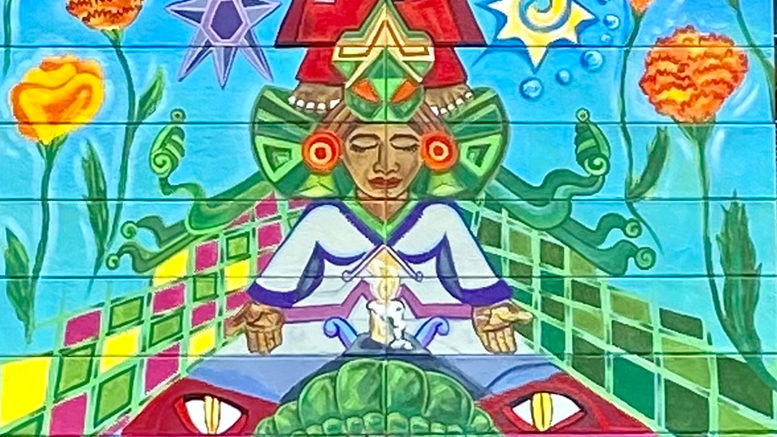A group of dancers sways to the gentle strains of a violin, the word “stay” illuminating the floor at their feet. Amid the hypnotic rhythm of moving bodies, a voice implores viewers to “Please stay. This is just a blip in time. You are breath. You are life. You are beauty. If you leave, you’ll never see the brilliance you created just by your existence.”
This 30-minute video is the multidisciplinary brainchild of Lansing Community College (Michigan), produced by faculty, students and staff to increase awareness of depression and suicide through the common ground of the arts. The program, which uses poetry, music, drama, dialogue and dance to explore common mental health struggles, is viewed by its creators as a connector for the campus and the community beyond.
This article is an excerpt from the current issue of the Community College Journal, the flagship publication of the American Association of Community Colleges since 1930.
“The fundamental factor (of the program) is bringing us together so we’re working toward a common goal,” says Melissa Kaplan, LCC academic and arts outreach coordinator. “It’s also bringing out unique individual expression. The power of the group is there, but the group can’t exist without the individual. Each individual voice matters and is unique.”
Sparking and developing conversations
While campus activism dates back decades, today’s community colleges are generating additional dialogue via interdisciplinary arts programming. LCC’s suicide prevention effort is joined on campus by “We Shall Overcome,” a project that merges history, diversity and the performing arts in considering racism and social justice.
Like LCC’s suicide awareness video, “We Shall Overcome” marked a collaboration among departments — in this case, performing arts, the office of DEI and various history, English and media services staff. A new version of the classic protest song was performed virtually by a choir comprised of students, faculty and board members.
A better reading experience: There’s a new look to Community College Journal online! It’s easier to read and to browse articles. Take a moment to check it out.
“‘We Shall Overcome’ is not always an in-your-face kind of protest song, but it’s rallied people together over the ages,” Kaplan says. “To sing this anthem of hope and bring our campus community together to do that, it really felt like we were following in those footsteps.”
The program coalesced around the Black Lives Matter protests of summer 2020, sparked by the murder of George Floyd and other extrajudicial killings of Black Americans. Common cause — not to mention a campus searching for healing at the start of the pandemic — mobilized disparate departments alongside students eager for connection.
“Opening the choir to anyone on campus helped build that community,” says Kaplan. “We brought people together to create these programs, while exploring different ideas through the arts in a variety of settings.”
Improving the student experience via art
A grassroots model of arts programming is a common theme among institutions interviewed by Community College Journal. At Cabrillo College (California), a group of staff, faculty and students reviewed an ensemble of artists prior to commissioning a mural on the Aptos campus.
Local artists Francisco Alonso and Jeronimo Sanchez were chosen to create the 30-foot-high painting placed on an upper campus elevator tower. According to President Matthew Wetstein, the mural recognizes Cabrillo’s varied enrollment and celebrates its federal Hispanic-serving institution (HSI) status.
With about half of the college’s spring 2022 graduates of Hispanic heritage, authorizing a wall painting that reflects the different ethnicities on campus was an easy decision, says Wetstein.
Other colleges featured in the CC Journal article:
— “One Book, One College, One Community” reading project at De Anza College (California).
— Northeast Community College (Nebraska) wanted to create an inviting culture through art.
Entitled “Unity,” the colorful creation was unveiled before the start of the 2021 school year. The mural integrates symbols of indigenous ancestral wisdom, from Chinese and African culture to Native inhabitants of California’s Central Coast.
Funding for the mural came from the student senate and the Cabrillo College Foundation. Last September’s unveiling served as a campus celebration, complete with dance performances, poetry readings and free Mexican food on the quad.

The event was also Cabrillo’s first official commemoration of Hispanic-Serving Institutions (HSI) Week, a national effort to recognize higher-education entities that aid a primarily Hispanic population. As defined by the U.S. Department of Education, a college is deemed an HSI if more than 25% of its students are Hispanic. Today, these learners represent about 46% of Cabrillo’s student body.
Cabrillo’s enrollment also presents a challenging contradiction compared to the wealthy white retirement community surrounding it, Wetstein notes. Although Santa Cruz County is 87% white — per figures from the U.S. Census Bureau — the region also has its share of migrant agriculture workers and struggling first-generation students. About 80% of Cabrillo’s enrollment subsists on free school meal programs prior to arriving on campus.
Considering these circumstances, Cabrillo leaders are striving to make its majority population feel as welcome as possible. College officials are hoping to set aside $20,000 in annual general funding to commission more locally generated art, whether from Hispanic artists or the region’s Native population.
Although art is but one small facet of a larger whole around inclusivity, Wetstein sees a clear value in such creative representation.
“Students feel like they’re represented when they see their likeness on campus,” says Wetstein. “We’re creating a more welcoming environment for them to thrive in. Too often, people in my role don’t spend time thinking about how the physical space of a campus can be a retention asset or barrier. The way we present ourselves to students matters. It’s about making their experience better.”

